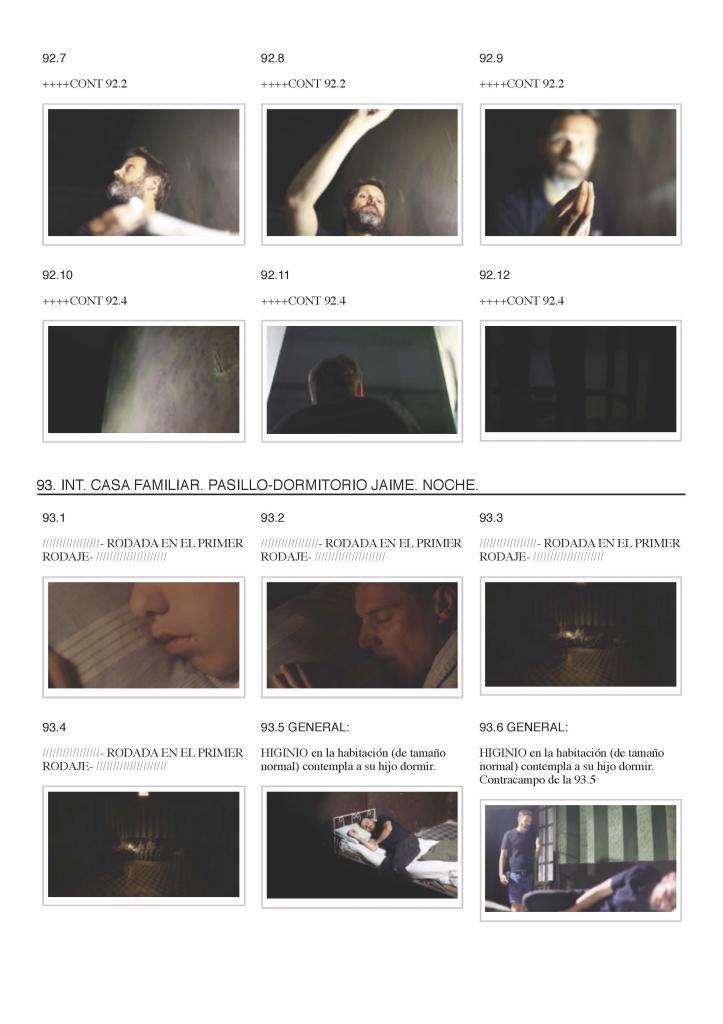- Jaume Balagueró.In the bowels of the Bank of Spain
- Paco Plaza.Narcos, nécoras and blood
- Villaronga, a millionaire Saudi adventure
- Sánchez Arévalo.Portrait of teenager with dog
'The infinite trench'
Drop down
- Directors: Jon Garaño, Aitor Arregi and José Mari Goenaga
- What is it? Antonio de la Torre is locked again after 'Night 12 years' in the solitude of the harassed. One of the most brutal and silenced episodes of the Civil War.
- Origin of the idea: After watching the documentary '30 years of darkness', the directors increased the bet.
It was St. John of the Cross who warned a fellow monk of mystical fatigue of the meaning of all this: "We do not travel to see, but not to see." The phrase is used whenever it has occasion by Jean-Claude Carrière, screenwriter of Buñuel, who appropriates it to define the same cinema. "It is not so much what the screen teaches as what it hides." The enigmas, in effect, are like this: contagious. Who knows if the directors Jon Garaño, Aitor Arregi and José Mari Goenaga had the teachings of the poet (either of the two mentioned) in mind when they decided to launch into the production of The Infinite Trench . But there was something.
Telling the story of someone locked up for decades in the solitude and even the darkness of his house has a lot of travel to the deep, the hidden, the mysterious and, above all, the painful. What is not seen. And, therefore, towards the most genuine of the same cinema .
José Mari says that everything happened after seeing 30 years of darkness , the film between animation and the documentary directed by Manuel H. Martín and that tells the story of the mayor of Mijas, one of the moles that in the Civil War had to take refuge inside your own home and yourself so as not to be first discovered and then killed. And so for years, decades, eternities. "Our concern," says one of the three directors in command, "was to generate a story that endured the times of fiction . First we thought of a claustrophobic drama like Buried , by Rodrigo Cortés, but then we realized that it was not that. The imprisonment suffered by these people was more daily, more permeated with daily despair, perhaps not so heroic, but much more serious. Painful and deep. "
The infinite trench , which will soon be seen in the official section of the San Sebastian Festival, feeds on a thousand stories. Of all those who lived literally buried between 1936 and 1969, the year of Franco's amnesty . Many of them included in the book by Jesús Torbado and Manuel Leguineche. "What moved us," José Mari continues, "is not so much the historiographic desire as the ability to generate metaphors." Not in vain, what counts is fear, the panic to be discovered, the terror of the absurdity that permeates every gesture, the emptiness that everything can. And here, moles or not, we are all.
The director tells us that the original idea was to play with the point of view, with the off-field, with the silence . And also says of this first impulse has not moved a movie starring Antonio de la Torre and Belén Cuesta. He says that the film starts perhaps closer to the genre, of the survivor films, to gradually sink into the day-to-day life of a darkening life. "The first visual references we were driving were very close to Polanski, for moving in an area where the nightmare blends with reality, until little by little everything takes its natural course towards a more universal drama, more pending than really weighs, feels, lives ... What happens to a simple toothache? And if he falls ill with the flu? "says Goenaga in an attempt by force impossible to advance what, for now, not it looks. But it will be seen shortly.
The three directors, who together have already done Loreak and Handia , raised a small book of style. The protagonist's equinoctial adventure had to beat from his eyes, from his point of view. The way to imagine each sequence before filming it has a lot of shared materiality . "None draws. So we composed some collages with rescued photos from here and there while we filmed ourselves in the locations to elaborate a kind of technical script with the frames of the rolled material," says José Mari. And how do you roll with six eyes? "Let's say we are all in the same record. There are no fights. Or not many. The shooting was split in two. In the first part, Aitor and José Mari himself (Jon was in the United States then) took care of everything. In the second, José Mari remained on the set and Jon replaced Aitor. "Always, the one who doesn't roll is the one in charge of the assembly. It is a well-oiled machinery, "he says.
Seen in perspective, everything seems coherent. The global process of the film begins with everything that is barely visible to find what is finally right to see, which, in purity, is all that is not seen. Indeed, a beautiful and painful journey to "not see" .
According to the criteria of The Trust Project
Know more- culture
- movie theater
- Film reviews
- Cineseries
- Films
The heroine of time, of good weather
Cinema20 years of 'The sixth sense', the success of a fired executive, a debt actor and an inexperienced director
CineMuere director Roberto Bodegas, founder of the 'third way' of Spanish cinema

